#hampton fancher
Text
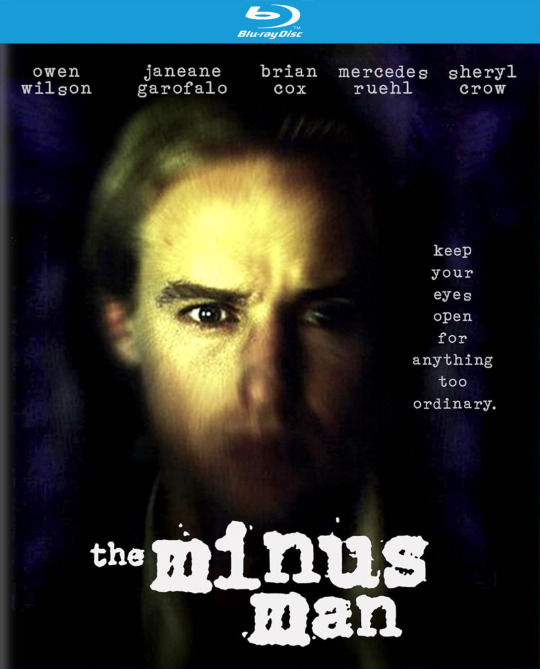
The Minus Man will be released on Blu-ray on April 9 via Kino Lorber. The 1999 psychological thriller marks the lone directorial effort of screenwriter Hampton Fancher (Blade Runner, Blade Runner 2049).
Fancher also penned the script, based on on the 1991 novel by Lew McCreary. Owen Wilson, Janeane Garofalo, Brian Cox, Mercedes Ruehl, Dwight Yoakam, Dennis Haysbert, and Sheryl Crow star.
The Minus Man has been newly restored in 2K from an interpositive. Special features are listed below.
Special features:
Audio commentary by writer-director Hampton Fancher and producer Fida Attieh, moderated by film journalist Max Evry
Theatrical trailer
When quiet, aimless and amiable Vann Siegert (Owen Wilson) drifts into town, no one suspects the evil that lies beneath the surface. Despite his easy charm, he is merely a reflection of what those who encounter him want him to be. The more Vann tries to make a go of his new life, the stronger the mysterious forces are that pull him in a darker direction. When locals start to disappear, it becomes clear that an eerie subtraction is at work among the lost and lonely of this sleepy, seaside hamlet. People look toward Vann, but no one can quite put their finger on who he really is. Through it all, he carries on a surreal dialogue with imaginary detectives who question his crimes and motives.
Pre-order The Minus Man.
#the minus man#owen wilson#janeane garofalo#brian cox#sheryl crow#dwight yoakam#dennis haysbert#kino lorber#dvd#gift#hampton fancher#blade runner#90s movies#1990s movies#psychological thriller
11 notes
·
View notes
Photo

#Blade Runner#Harrison Ford#Sean Young#Ridley Scott#Hampton Fancher#David Webb Peoples#Philip K. Dick#80s
116 notes
·
View notes
Photo
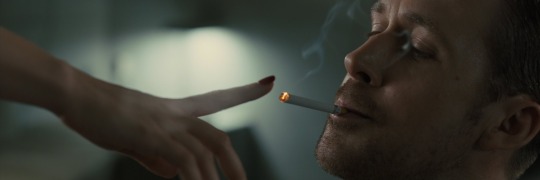



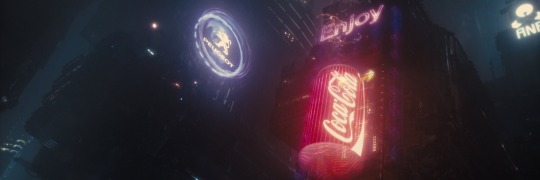

Blade Runner 2049 (2017)
#Blade Runner#blade runner 2049#Ryan Gosling#Ana de Armas#Mackenzie Davis#Krista Kosonen#Elarica Johnson#Roger Deakins#Denis Villeneuve#Hampton Fancher#Michael Green#Philip K. Dick#header#headers#screenshot#screencaps#film#movie#movies#films#cyberpunk#futuristic#cigarrete#green#purple#pink#red#CocaCola#coca cola#subtitles
129 notes
·
View notes
Text
Blade Runner 2049 (2017)

Blade Runner 2049 is one of the few times I've seen a film’s intelligence work against its own third act. This is a sci-fi pic with a brain, a great successor to the original Ridley Scott classic thanks to its themes and stunning visuals. So much thought has been placed into the workings of its world you can tell this film is too smart for it to go in the direction it’s pretending to go. Is that a legitimate flaw? Hard to say. One thing’s for sure, the picture is too long, even when watching it at home. Nonetheless, those who want a thinking man's story about robots and what it means to be human will not be disappointed.
In the future, artificial humans called replicants serve mankind as slaves. "K" (Ryan Gosling), is a blade runner, an advanced replicant charged with hunting down his rogue brothers. When the remains of a once-pregnant replicant are discovered, the thin line that defines humanity is threatened. K is charged by his superior (Robin Wright as Lt. Joshi) to track down and eliminate any trace of this anomaly. His only lead is a name: Deckard.
Before its theatrical release, Blade Runner 2049 was preceded by three short films that help enrich the world and clarify this view of the future. Included in the home release, they bridge the gap between the 30 (in-universe) years between the first film and this sequel but the quality varies. The first, Black Out 2022 is animated but the graphics are only ok. Otherwise, I’d say it’s the best of the three. 2036: Nexus Dawn shows the rise of Niander Wallace (Jared Leto), but it’s a bit over-the-top in just how evil he seems… though this may be appropriate considering the film is, ultimately, about a race of artificial humans who are enslaved. The third, 2048: Nowhere to Run focuses on Sapper Morton (Dave Bautista). It's fine but doesn't add much to the overall experience. Ultimately, these little stories are worth seeing. Altogether, they run about a half hour so I say watch them all three in a row, then take a break. Next up, the whopping 163-minute ride that is 2049.
Blade Runner 2049 is a dazzling presentation. Even at home, you’ll be impressed by the rich cityscapes, particularly the futuristic advertisements projected on the streets. The look of Blade Runner 2049 blows away the competition, particularly 2017’s Ghost in the Shell, which I gave a pass to but seeing this, regret doing for so many reasons. That’s only the surface. What's most exciting is what this film is saying about humans, artificial or not. When K goes home, he is greeted by an artificial woman, a hologram confined to his apartment who simulates small talk and a relationship. We’re talking about an artificial being interacting with another, completely different artificial being. What does it say about this facsimile of a man that he still longs for companionship? In the world of Blade Runner, the line between real and artificial humans is solely defined by whether or not one is born or grown in a factory. We’re shown that Replicants are as capable of emotion as people are, and it seems so unfair that they are considered property. If the artificial intelligences we keep developing continue the way they do now, how long until the only difference between a human being and a computer is that one has a body and the other doesn’t?
Blade Runner 2049 is what all sequels should be. It stands firmly on its own but you’ll have a greater appreciation for it if you’ve seen the original. The world and characters within it are complex, sometimes in unexpected ways. Sometimes it’s not so much what someone says or does, but what they don’t say or do that shows what they’re really about. Like its predecessor, this was not a box-office champion but it’s got the intelligence, the story and the dazzle necessary to endure. (On Blu-ray, June 29, 2018)
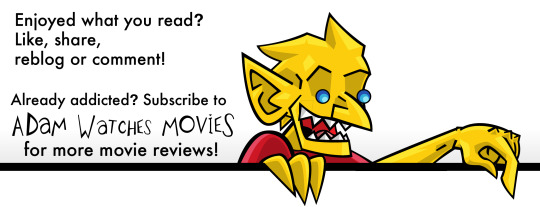
#Blade Runner 2049#movies#films#movie reviews#film reviews#Denis Villeneuve#Hampton Fancher#Michael Green#Ryan GOsling#Harrison Ford#Ana de Armas#Sylvia Hoeks#Robin Wright#Mackenzie Davis#Lennie James#Dave Bautista#Jared Leto#2017 movies#2017 films
5 notes
·
View notes
Photo

Sue Lyon and Hampton Fancher at their wedding, 1967
1 note
·
View note
Text
The Warped Shelf - Blade Runner (AFI Top 100 #97)
The Warped Shelf – Blade Runner (AFI Top 100 #97)
We’re back on the AFI list with a milestone for sci-fi films, but we might actually have opposing thoughts on this one, friends. Get ready for lots of smoke and rain.
Episode #129
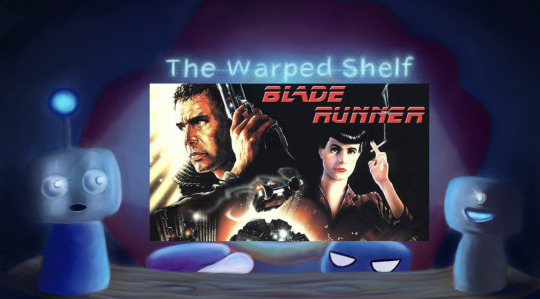
View On WordPress
#100 Greatest movies of all time#1982#AFI#American Film Institute#American Films#Blade#Blade Runner#Cyber punk#cyberpunk#Edward James Olmos#Films#Galaxy of Geek#great movies#Greatest Movies of all time#Hampton Fancher#Harrison Ford#Joe Turkel#M.Emmet Walsh#Neo Noir#Noir#Phillip K Dick#Podcast#Replicants#Review#Ridley Scott#Runner#Rutger Hauer#Sci-Fi#Sean Young#The Warped Shelf
0 notes
Text
ok so i'm trying to watch blade runner for the first time. but i got distracted wondering where the title blade runner came from, bc i've read "do androids dream of electric sheep?", and iirc the term blade runner isn't even used there. right? WELL turns out it's borrowed from a 1979 novella Blade Runner: A Movie by William S. Burroughs (not actually a movie but screenplay in book form, and, according to reviews, mostly incomprehensible and thoroughly unfilmable) WHICH in TURN is a very loose adaptation of the 1974 novel The Bladerunner by Alan E. Nourse (who wasn't a nurse but was a doctor. btw). and screenwriter Hampton Fancher just thought it sounded cool
#more info to come as i investigate further. this is more entertaining than the actual movie#.txt#books
129 notes
·
View notes
Text





🎥 movie scenes & their screenplay 🎬
BLADE RUNNER 2049
dir. denis villeneuve
screenplay; hampton fancher & michael green
#filmedit#blade runner 2049#bladerunneredit#movieedit#filmgifs#moviegifs#mygifs*#screenplayscenes*#stares directly at the joi scene#when she's introduce in the screenplay it says she doesn't make when k looks away from her#but when he's unconscious she appears and starts freaking out#tin foil hat is ALWAYS on for k x joi#screenplay yonked from scriptslug#great website!!! 10/10 rec for reading these#i had to edit the caption on mobile so praying the formatting didn't get fucked up
83 notes
·
View notes
Text

Blade Runner 2049 (2017), screenplay by Hampton Fancher and Michael Green
3 notes
·
View notes
Text
BLADE RUNNER 2049
Bladerunner 2049 is a science fiction romance film directed by Denis Villeneuve and written by Hampton Fancher and Michael Green. Is the sequel to the classic film Blade Runner (1982). If you are looking for a cyber-futuristic sci-fi dystopia theme with a long-lasting emotional effect and great cinematic shots, look no further than Blade Runner 2049, featuring Ryan Gosling as Officer K, a Blade Runner replicant whose task is to eliminate old rogue model replicants while investing in whether he truly is real or not by his haunted past memories, and Ana de Armas as the AI girlfriend companion of Officer K. Join us as we watch this great film and its upbeat humanitarian feeling. Available on Netflix

Bladerunner Rooftop Scene
Credits to @akattack0 / Youtube
2 notes
·
View notes
Photo

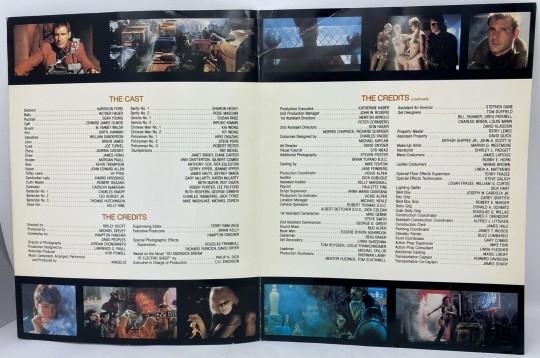
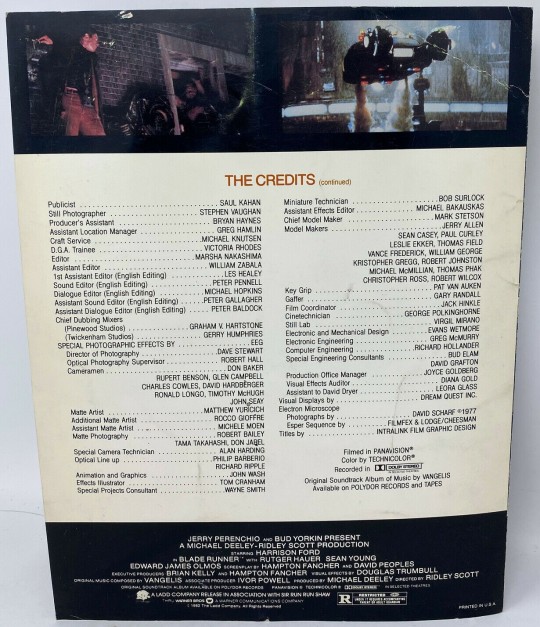
#Blade Runner#Harrison Ford#Sean Young#Edward James Olmos#Daryl Hannah#Joanna Cassidy#Rutger Hauer#Ridley Scott#Hampton Fancher#David Webb Peoples#Philip K. Dick#80s
59 notes
·
View notes
Text
Task #5 Movie Review
(Movie Name : Blade Runner 2049)
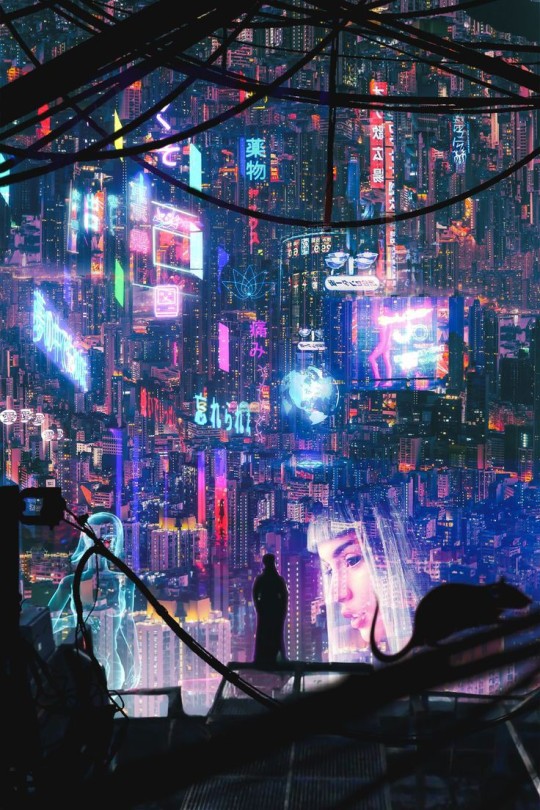
"Blade Runner 2049" is a visually stunning and thought-provoking sci-fi masterpiece that successfully carries on the legacy of its predecessor. Directed by Denis Villeneuve, this long-awaited sequel takes place 30 years after the events of the original film and explores new depths of the dystopian world created by Ridley Scott.
The film follows Officer K (Ryan Gosling), a replicant Blade Runner tasked with hunting down older models of replicants and maintaining the fragile order in society. However, his discovery of a buried secret during a routine investigation sets him on a journey that challenges his perception of identity and the nature of humanity itself.
The cinematography by Roger Deakins is nothing short of breathtaking. The visuals are hauntingly beautiful, with each frame meticulously crafted to immerse the audience in a bleak yet captivating future. The attention to detail and the use of lighting and color create a mesmerizing atmosphere that enhances the film's overall mood and tone.
Ryan Gosling delivers a nuanced and introspective performance as Officer K. He portrays a character torn between duty and personal discovery, capturing the essence of a conflicted individual in search of purpose and truth. The supporting cast, including Harrison Ford as Rick Deckard, Ana de Armas as Joi, and Sylvia Hoeks as Luv, all deliver standout performances that add layers of complexity to the narrative.
The film delves deep into existential themes, exploring questions of identity, memory, and what it means to be human. It poses thought-provoking ideas and invites the audience to ponder the moral and ethical implications of artificial intelligence and the blurred lines between man and machine.
While the film's deliberate pacing may not appeal to all viewers, it serves to build tension and create a sense of anticipation, allowing the story to unfold gradually. The screenplay by Hampton Fancher and Michael Green is intelligent and thoughtfully crafted, weaving together intricate plot threads while paying homage to the original film.
"Blade Runner 2049" is a cinematic achievement that successfully expands upon the world established in the first film. It combines stunning visuals, captivating performances, and profound philosophical themes to create an unforgettable viewing experience. Fans of the original will appreciate the homage and attention to detail, while newcomers can still appreciate it as a standalone work of art. This film reaffirms Denis Villeneuve's status as a master filmmaker and cements its place as a modern science fiction classic.
-The momentum of this movie that brought me into an imaginary world that can be a reality in the future is really helpful for me to think about human civilization as there is approaching nearing the post 21st century. What will be the future? The answer is of course will lay into a present world that will become past. But no matter what the human will always find its path to carve into this space as a metaphor to a parasite that slowly devours its host. The coincidence is just a Destiny that we created. Of course humans will eventually destroy themselves but how far can humans become?, Evolve, Civilized and devour, the answer will always lay in three different answers that I probably will know someday.
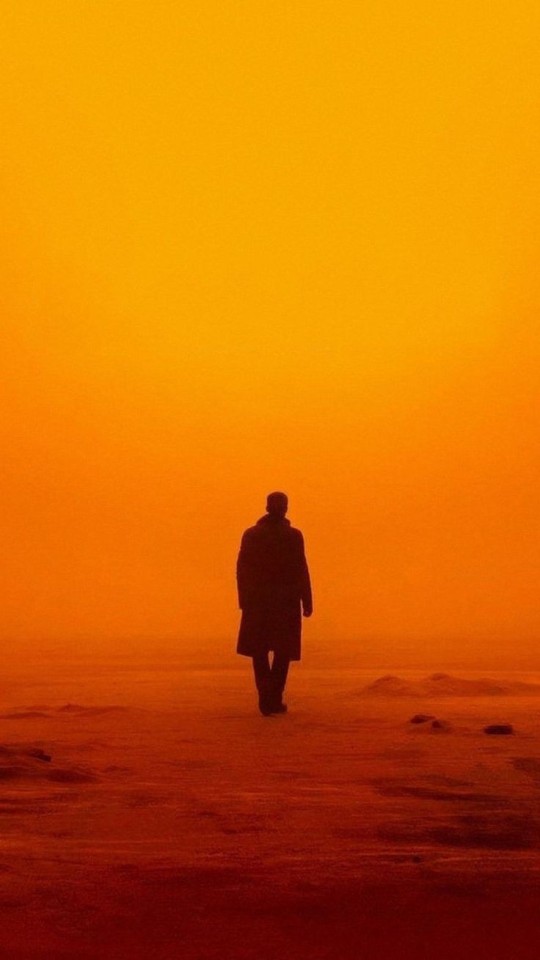
(Source: Blade runner 2049 retro art pic jshesko-09, Pinterest)
2 notes
·
View notes
Text
Marvel Super Special #22, Blade Runner

Before the home video era, there were precious few ways that one could experience a favorite movie away from the cinema, all of them imperfect to a degree. Perhaps the best known, and one that still exists today, is the movie novelization, in which your favorite film appears in book form. Movie novelizations have existed for nearly a century now; what we know of Lon Chaney’s famous lost silent film London After Midnight comes from production stills and the film’s novelization. When I was younger, I read quite a few. If you wanted to “experience” the latest R-rated movie—i.e. Alien, RoboCop, Predator, Aliens—and your parents weren’t going to take you, then film novelizations were the best option. They cost about as much as a full price movie ticket yet were more widely available, easily purchased from the paperback racks at your local grocery or drug store. Best of all, most novelizations were based on the film’s shooting script and featured scenes that failed to make the final cut.
Comic book adaptations of films have existed almost as long as novelizations. In some ways, comic books would seem to be a better, more truer way to adapt movies as the form combines both words and images. And when I was growing up, there were no better film to comic adaptations than the Marvel Super Specials. These were oversized issues that were a bit pricier than normal comics, running between $1.50–$2.50 at a time when normal comics were 30¢-60¢, so saving allowance or good behavior to get a parent to buy me one was quite often required. But they were gold—adapting all of the blockbuster films that I wanted to see (but, again, sometimes couldn’t) while also allowing me to relive them again and again in the comfort of my bedroom. Among the films featured as Marvel Super Specials included The Empire Strikes Back, Close Encounters of the Third Kind, Tarzan, The Dark Crystal, Battlestar Galactica, The Muppets Take Manhattan, The Last Starfighter, Dragonslayer, and Blade Runner.
Wait? What? Blade Runner?
Yes, in 1982, Marvel Comics published an adaptation of Ridley Scott’s masterpiece, Blade Runner, Marvel Super Special #22: Blade Runner went on sale May 25, 1982, according to Grand Comics Database, a full month ahead of the film’s release date, June 25. The adaptation then appeared as two issues that hit newsstands in July and August.

There’s a bit to unpack here. First thing, pretty much everyone reading this knows that Blade Runner is an adaptation of Philip K. Dick’s Do Androids Dream of Electric Sheep?. Yet the Dangerous Days: Making Blade Runner documentary makes clear that Hampton Fancher, the film’s original writer, regards both his screenplay, and the resulting film, as being inspired by Dick’s novel, and as adaptations go, it is very different. But, for years afterward—well into the 90s—the only published edition of the novel bore the film’s artwork and title. While this edition no doubt served as a gateway book for many who would go on to read more of Dick’s fiction, it’s not a great way of re-experiencing the film as it plays on the screen, unlike those novelizations I listed above. So the only contemporary (i.e. 1982) film-to-page adaptation of the film Blade Runner was the one published by Marvel Comics.
Well then, how is it you may ask? It’s a bit strange … and that has everything to do with both the film itself and the time it was released.
In 1982, comic books were still very much considered to be the domain of boys, 8 to 14-year-olds. Yes, this is a generalization: girls were reading comics; there were older readers, too; but unlike today, where there is a much broader readership for comics, the primary demographic were pre-teen boys—revisit those old issues, look at the ads inside and see if you don’t agree with me.
Now, here’s a question you might have: if you believe your readership demographic is going to be young boys (again, 8 to 14, though you might stretch that out to 15 or 16), then why are you adapting an R-rated, under 17 requires accompanying parent or adult guardian, property? This is a bit perplexing, too. It creates a demand to see the film among a group who had little chance of actually going to see the film. If a comic book adaptation is being seen as a promotional item to drive customers into the theatre, than it serves that the audience of that adaptation should not be impede from seeing the film in the cinema by the MPAA rating. Of course, when the producers approached Marvel about licensing the film for a comic book adaptation, the project would yet to have been rated. So, imagine yourself in Marvel’s position— you’ve been pitched a science-fiction film starring Harrison Ford, at a time that you are selling tons of Star Wars comics every month, which just happens to feature a character portrayed on-screen by Harrison Ford. Also, look at that list of films above adapted into Marvel Super Specials, most of them are sci-fi and/or star Harrison Ford. As such, Blade Runner sounds perfect, right? Of course it does. Neither Warner Bros. nor Marvel would be aware of the film’s rating until just before its release when all work on the adaptation would have already been completed. That said, based on the film’s themes and imagery present in the various draft scripts, an R-rating was highly probable, if not certain.
So come the summer of 1982, 8-year-old me couldn’t go see Blade Runner, and my parents were certainly not going to take me to see it, but I could buy the two issue adaptation for $1.20 total at the 7-11 spinner rack, or the oversized Super Special edition for $2.50. Again, both cheaper than a movie ticket. Yes, the nudity and violence from the film was toned down in the adaptation, but there was also no way that I would have seen the film, no matter how badly I wanted to.
Dan! Enough about movie ratings! What is the Marvel Comics Blade Runner like?
Again, it’s a bit strange… but you can read it here through the magic of the internet.
Have you read it? Do you see what I mean?
Okay, okay, for TL;DR persuasion, allow me to elaborate.
First off, Marvel’s creative team on the book was a stellar one: Archie Goodwin, who was one of the most beloved and well-liked figures in the industry for three decades, wrote the adaptation with artwork by Al Williamson and Carlos Garzon. Williamson was uniquely qualified for the project, having previously drawn Flash Gordon comics as well as the classic EC Comics sci-fi titles, Weird Science and Weird Fantasy. Goodwin, Williamson, and Garzon had all worked together on Marvel’s Star Wars series, including the Super Special adaptations of The Empire Strikes Back and, later, The Return of the Jedi. So you have a sci-fi experienced creative dream team in place, it should be great, right?
Well, if you’re a big fan of Blade Runner, then you are probably familiar with the film’s troubled production history, brilliantly charted in the aforementioned Dangerous Days documentary. The film’s script was in flux throughout filming. To briefly recap: Fancher’s original screenplay wasn’t quite working out so the production brought in David Webb Peoples for revisions and rewrites. Fancher would later return to contribute additional rewrites. However, well into post-production, the film still wasn’t “coming together”. Screenings for studio executives and test audiences were poorly received. This would lead to the love-it-or-hate-it voiceover narration being added to clarify the film’s action. All of this would have been problematic for a team working on a film-to-page adaptation. Given the production timeline needed in order for the comic books to appear concurrently with the film’s release, the Marvel team wouldn’t have been able to see a completed version of the film. Nor would a comic book adaptation be considered high priority enough to warrant that they be shown a rough cut much less any work-in-progress footage. Common practice with screen-to-page adaptations is to use the shooting script, but Blade Runner’s script was one being constantly revised and rewritten throughout filming and post-production. So my conjecture here is that Goodwin received a shooting script from the production but was unaware that the was still being tinkered with as dictated by post-production’s needs, requiring more and more revisions. And while motion picture footage might not have been available, it is clear that Marvel’s team did have access to concept art and production stills, allowing Williamson and Garzon to adapt and incorporate the film’s visuals into their artwork. The adaptation’s narrative is almost an impressionistic reading of the film with more than a few story beats that play differently.. Some of this would have been necessary to tone down the sex and violence to garner the Comics Code Authority approval needed at the time. Below are a few of those changes explored alongside screen-to-page comparisons—
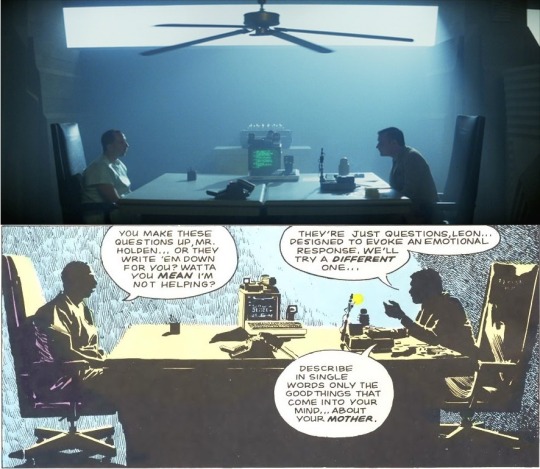

If you’re pro-narration, then you’ll probably love the comic. Like a Chandler novel, Deckard narrates virtually all of the action via the comic’s captions.

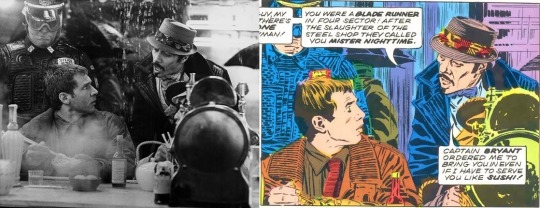
Gaff’s “Cityspeak” is one of the biggest divergences from the film in Marvel’s adaptation. Edward James Olmos improvised most of his patois during production, so little of what we hear in the film would have been in any script sent to Marvel—what does appear in the comic reads as stilted and just plain goofy.
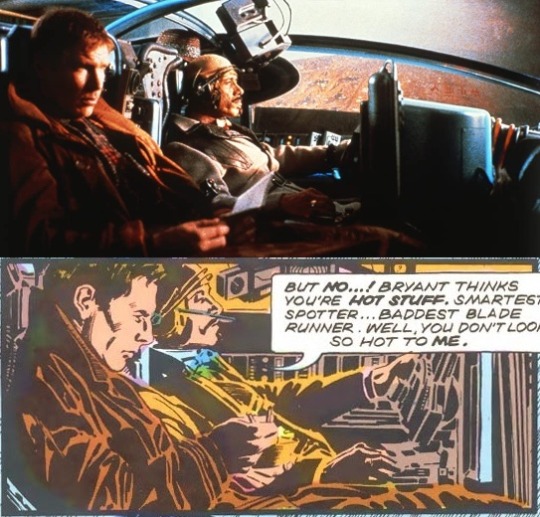

The comic never equates the “skin job” slur with the N-word, leaving the reader to rely on context to come to that understanding.
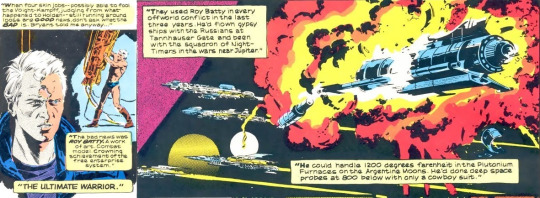
Here is why Roy is such a formidable bad ass, info cut from the finished film.
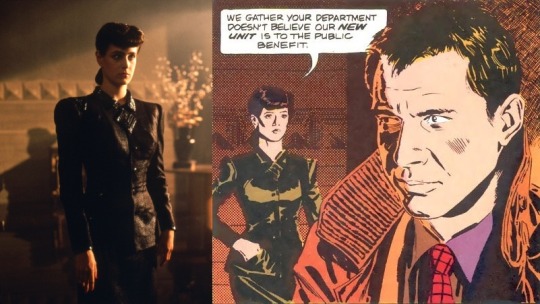
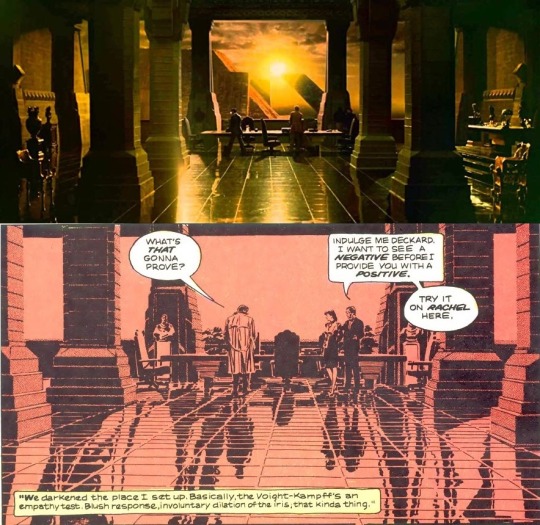
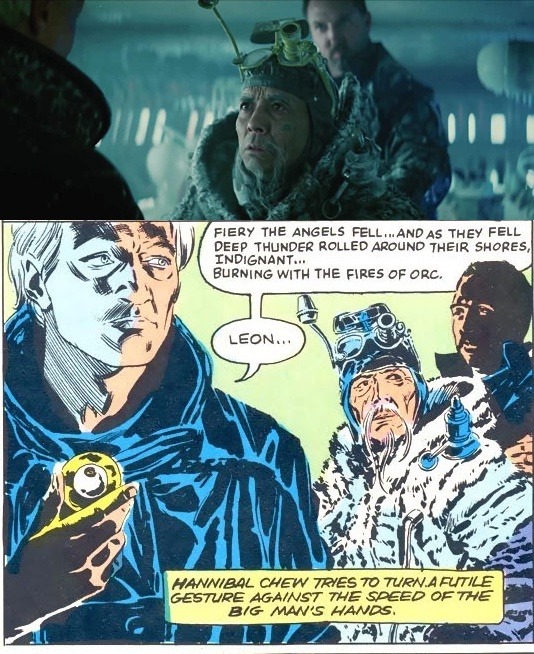
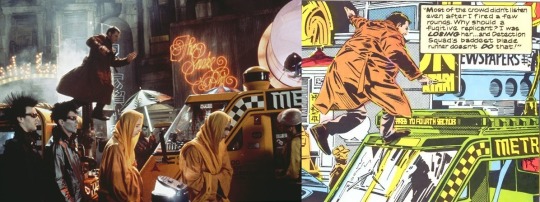
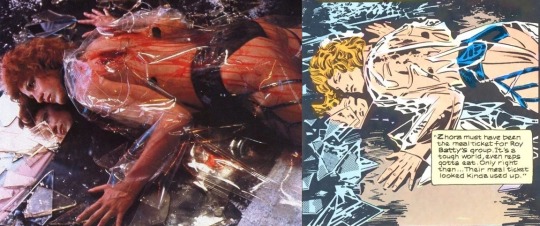


The film’s most problematic scene is still problematic in the comic, just in a different way. There are still consent issues present but Deckard’s raw aggression isn’t as evident on the page as it is onscreen.
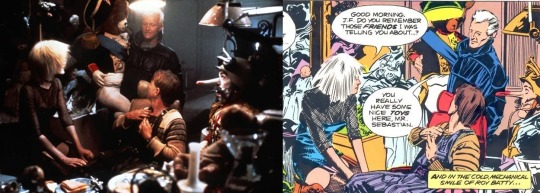
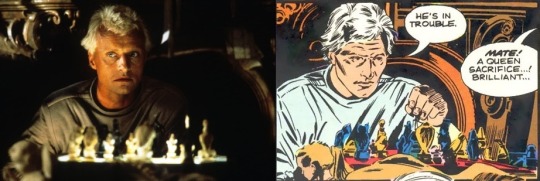


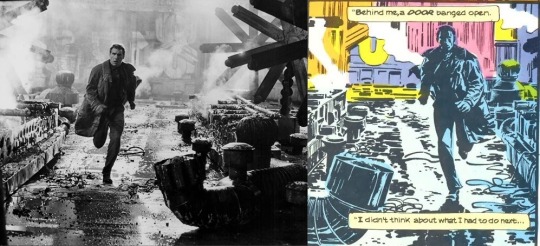
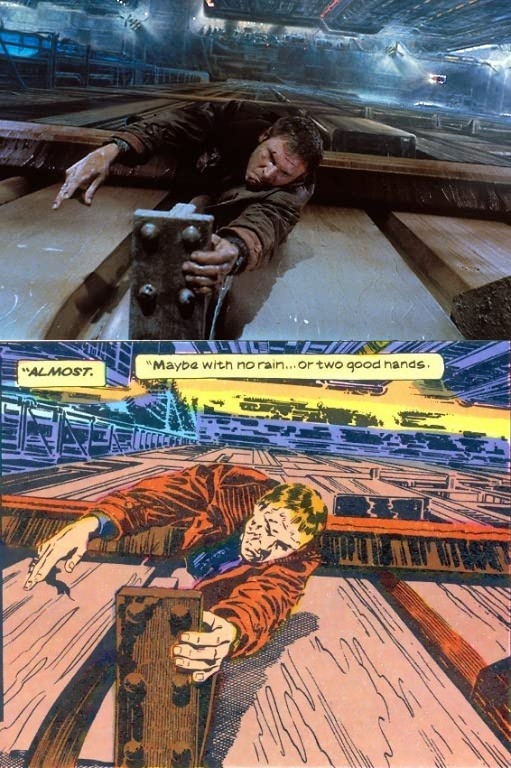


Roy’s famous poetic final lines failed to make it into the comic. Rutger Hauer improvised them during a table read, but those lines seem never to have been written into the script, or at least not the one sent to the Marvel offices.
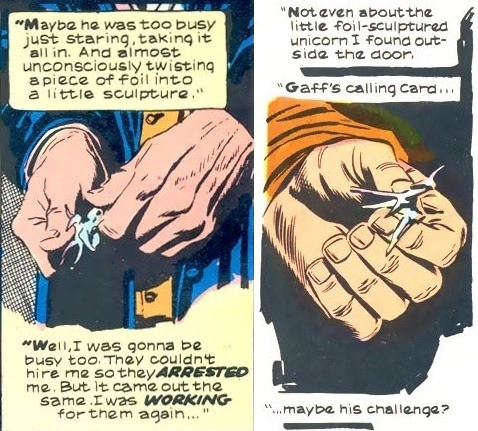
The unicorn is the most important symbol in Scott’s final cut, making the case for many viewers that Deckard, too, is a replicant. In the original theatrical release, the origami unicorn functions in two ways: first, it establishes Gaff visited Deckard’s apartment searching for Rachel; and second, it symbolizes Rachel’s unique replicant nature (no expiration date). In the comic, Gaff’s three origami dolls is reduced to one, the unicorn, but it makes two appearances. Deckard still finds it at his apartment just before fleeing with Rachel; however, the careful reader will notice the unicorn’s first appearance in Captain Bryant’s office, where it replaces the chicken. This shows, I think, that Marvel’s creative team intuited the importance of the origami unicorn while also seeing it as a baffling red herring—important enough to be included but its true context not being fully established in the script. To remedy this situation, the unicorn was added to the police station scene, creating a satisfying, if minor, plant and pay off moment.
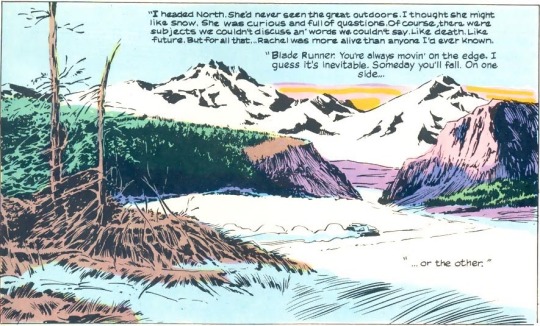
Marvel’s adaptation splits the difference between the U.S. release cut’s tacked on happy ending and the filmmaker’s original, more ambiguous intent made manifest in the film’s subsequent cuts. Why, exactly, “Blade Runner” as a title? Well, the final lines here spell it out for the reader.
#Blade Runner#Marvel Comics#Marvel Super Special#Harrison Ford#Rutger Hauer#Edward James Olmos#Sean Young
9 notes
·
View notes
Text
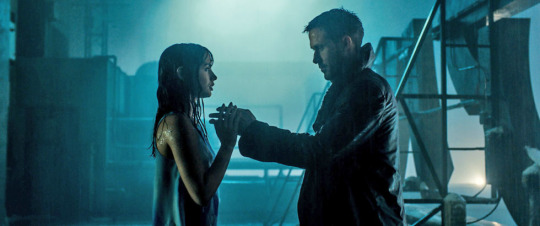
Os 40 anos e as origens de Blade Runner (parte 5)
Por Cláudio Tsuyoshi Suenaga
Blade Runner 2049
Nada esperava de Blade Runner 2049 (produzido por Ridley Scott e dirigido por Denis Villeneuve, com roteiro de Hampton Fancher e Michael Green), já que seria impossível igualar ao de 1982. E justamente por não esperar nada dessa continuação tardia e forçada, não cheguei a detestar o vislumbre de um mundo ainda pior do que o de 2019, controlado por uma super elite illuminati que reduziu a humanidade a uma escória que fabrica supertranshumanos para Niander Wallace (Jared Leto), um insano e sádico multibilionário, dono da Wallace Corporation, um “deus” que suplantara Eldon Tyrell (Joe Turkel), o “deus” anterior, criador dos replicantes da série Nexus-6.

Jared Leto como o pretendente a deus Niander Wallace.
Se o primeiro filme foi um preâmbulo da globalização e de tudo o mais que o mundo se tornou, este é um vaticínio, uma constatação irrevogável do que o mundo está se tornando sob as bênçãos do “Olho de Hórus” que tudo vê e do qual nada escapa, da matrix controladora da ignorância e da cumplicidade abençoadas.
Olhos que tudo veem estão em toda parte agora, em nossos smartphones, em todos os gadgets e aparelhos que compramos, em todas as logomarcas, em toda a cultura pop, e não só estampados na nota de um dólar no topo da pirâmide e nos zigurats piramidais de Blade Runner. A população é sutilmente influenciada por ondas eletromagnéticas indetectáveis, por micro-ondas de torres de telefonia celular, sem falar das mensagens subliminares embutidas em filmes, músicas, propagandas, videogames, etc. A rede que era oculta agora é explícita, e as próprias pessoas se assumem e se programam em auto-hipnoses como escravas illuminatis, a seu bel prazer e conformadas em serem sacrificadas.
Os androides replicantes são o amálgama de uma humanidade com as mentes controladas a fim de desempenharem múltiplas tarefas e realizarem múltiplos serviços em todos os níveis da sociedade. Podemos dizer que de certa forma todos nós somos androides pré-programados, máquinas que ao se desgastarem e quebrarem são simplesmente substituídas por outras, de uma geração bem melhor e mais sofisticada e ao mesmo tempo mais organicamente integrada. Do deus ex videogame, da franquia fast food aos fakes “direitos civis”, incluir-se é o mesmo que se ajustar a um sistema nonsense ecológica e politicamente correto.
E K (Ryan Gosling) é justamente um novo modelo de replicante, inteiramente conformado com sua função e que apenas obedece ordens, um títere que caça e “aposenta” antigos modelos rebeldes que ainda estão à solta. Sua vida pessoal se resume em trabalhar como blade runner para o Departamento de Polícia de Los Angeles e conversar com a esposa virtual Joi (a estonteante Ana de Armas), um produto fabricado pela Wallace Corporation em demanda à carência de afeto e sexo. K seria uma referência a Josef K., o protagonista enredado nas burocracias de O Processo, de Franz Kafka (1883-1924), e Joi uma corruptela de joy, ou seja, prazer, júbilo, diversão. O grande contentamento de K, que ama verdadeiramente Joi, uma projeção holográfica senciente com inteligência artificial, é encontrá-la sempre que chega em seu apartamento.

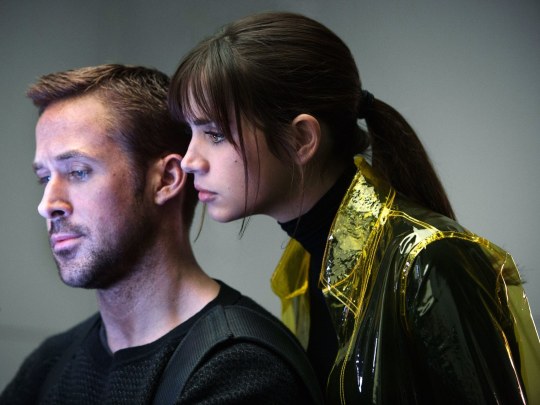


Com o bônus que recebe após “aposentar” o replicante Sapper Morton (Dave Bautista) em uma fazenda de proteína, K compra um “emanador”, um aparelho portátil que permite a Joi aparecer em qualquer lugar e não ficar restrita ao apartamento. O primeiro lugar que ela vai é ao terraço do prédio, onde se rejubila ao “sentir” as gotas da chuva escorrendo sobre seu corpo.
K só passa a questionar sua própria condição e origem depois que ele encontra na fazenda de proteína uma urna com os restos mortais de uma replicante que havia morrido por complicações no parto após uma cesariana de emergência. A gravidez da replicante, algo tido como impossível, deixa K perturbado. Temendo que a possibilidade de engravidar dos replicantes desencadeasse uma guerra civil, a superior de K, a tenente Joshi (Robin Wright), lhe dá ordens para destruir todas as evidências e aposentar a filha da replicante. Em uma visita a sede da empresa de Niander Wallace, K descobre que os restos mortais são de Rachael (Sean Young), uma replicante experimental que havia tido um romance com o blade runner e igualmente replicante Rick Deckard (Harrison Ford). Wallace por sua vez ordena que a replicante Luv (Sylvia Hoeks) roube os restos mortais de Rachael e siga K.
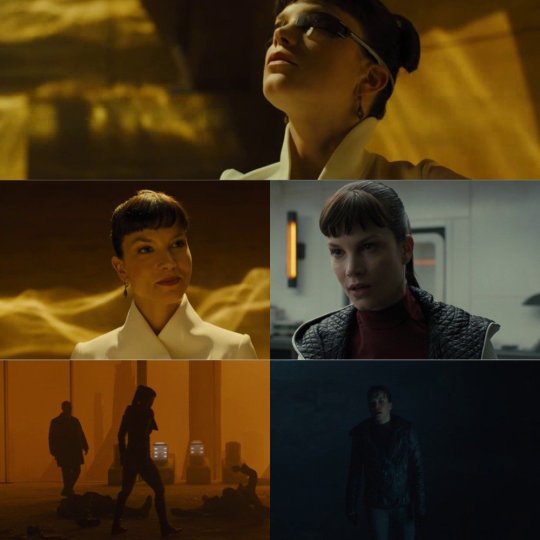
A replicante Luv (Sylvia Hoeks)
Desconfiado de que seria um dos filhos de Rachael, já que ela havia tido gêmeos, e a recorrente memória de infância artificialmente implantada de um singelo cavalinho de madeira com uma data de nascimento talhada a lhe sugerir isso, o transtornado K falha no teste psicológico para replicantes e é afastado por Joshi, que lhe dá 48 horas para desaparecer antes de ser caçado. K vai às ruínas de Las Vegas onde encontra Deckard, que revela que ele teve de deixar o corpo de Rachael e da criança com os outros replicantes para protegê-la. Sapper é quem a teria enviado a um “orfanato” de sucateiros com um único pertence: um cavalinho de madeira talhado por Deckard contendo a data de seu nascimento. Toda a memória infeliz da menina nesse orfanato foi depois implantada em K. Resgatada do orfanato, a menina, talvez devido aos traumas que sofrera, acaba desenvolvendo um problema imunológico que a obriga a viver dentro de uma bolha de proteção, o que não a impede de se tornar uma excelente designer de memórias a serem implantadas nos replicantes de Wallace.
Luv, em sua caçada, tenta matar K e Deckard, que é salvo por um grupo de replicantes liderados por Freysa (Hiam Abbass), a qual revela que Rachael morreu em seus braços após dar a luz a uma menina, e não um menino. Wallace confirma que Deckard, assim como Rachael, também é um replicante especial, e que os sentimentos de Rachael por ele foram deliberadamente programados visando uma reprodução natural! Por conseguinte, a filha deles é um símbolo da igualdade entre humanos e androides, o estopim de uma revolução no mundo de Blade Runner.
Tyrell havia logrado atingir a condição de semideus, portanto, ao criar seres perfeitos, indiferenciáveis dos humanos, motivo da frustração e irritação de Wallace, que não consegue ultrapassar a linha que separa os humanos dos sintéticos.
Blade Runner 2049 termina com muitas incógnitas e destinos trágicos, com a admissão da falência de um mundo artificial, da necessidade da busca de uma existência orgânica, de uma humanidade real e autêntica, de um amor verdadeiro, de uma alma.

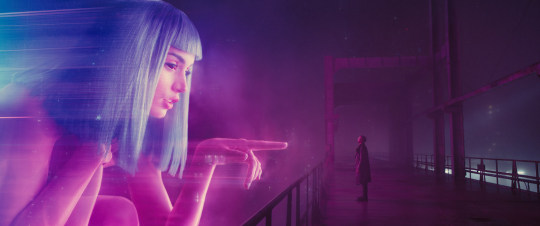
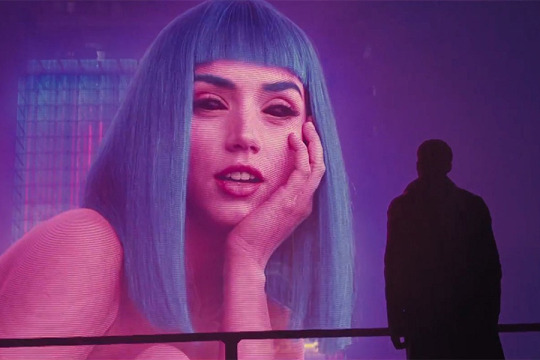
Chegará o tempo em que os androides parecerão (e serão?) mais humanos do que os próprios humanos, como os replicantes de Blade Runner?
Leia as partes 1, 2, 3 e 4.
4 notes
·
View notes
Text
Film research

Blade runner
Blade Runner is a 1982 science fiction film directed by Ridley Scott, and written by Hampton Fancher and David Peoples.[7][8] Starring Harrison Ford, Rutger Hauer, Sean Young, and Edward James Olmos, it is an adaptation of Philip K. Dick's 1968 novel Do Androids Dream of Electric Sheep? The film is set in a dystopian future Los Angeles of 2019, in which synthetic humans known as replicants are bio-engineered by the powerful Tyrell Corporation to work on space colonies. When a fugitive group of advanced replicants led by Roy Batty (Hauer) escapes back to Earth, burnt-out cop Rick Deckard (Ford) reluctantly agrees to hunt them down.
Blade Runner is a science fiction film released in 1982, directed by Ridley Scott. The story is set in a dystopian future in which genetically engineered beings known as replicants are used as slave labor on off-world colonies. The film follows a blade runner named Rick Deckard, played by Harrison Ford, who is tasked with hunting down and "retiring" rogue replicants who have returned to Earth illegally.
Blade Runner is known for its stunning visuals, thought-provoking themes, and atmospheric soundtrack. The film explores complex questions about what it means to be human and the ethical implications of creating artificial life. It has had a significant influence on the science fiction genre and has become a cult classic over the years.
In addition to its thought-provoking narrative, Blade Runner is also renowned for its visual effects and production design, creating a gritty and immersive futuristic world. The film has inspired numerous sequels, spin-offs, and adaptations, including the recent film Blade Runner 2049, directed by Denis Villeneuve.
Blade Runner is a science fiction film released in 1982, directed by Ridley Scott. The story is set in a dystopian future in which genetically engineered beings known as replicants are used as slave labor on off-world colonies. The film follows a blade runner named Rick Deckard, played by Harrison Ford, who is tasked with hunting down and "retiring" rogue replicants who have returned to Earth illegally.
Blade Runner is known for its stunning visuals, thought-provoking themes, and atmospheric soundtrack. The film explores complex questions about what it means to be human and the ethical implications of creating artificial life. It has had a significant influence on the science fiction genre and has become a cult classic over the years.
In addition to its thought-provoking narrative, Blade Runner is also renowned for its visual effects and production design, creating a gritty and immersive futuristic world. The film has inspired numerous sequels, spin-offs, and adaptations, including the recent film Blade Runner 2049, directed by Denis Villeneuve.
Overall, Blade Runner is a highly regarded and influential film that continues to captivate audiences with its unique blend of science fiction, noir, and philosophical themes.
Blade Runner is widely regarded as a groundbreaking and influential film in the science fiction genre. It has garnered a large and dedicated fan base over the years, and many people appreciate its thought-provoking themes, stunning visuals, and atmospheric storytelling. The film's exploration of humanity, artificial intelligence, and the ethics of creating and controlling life has sparked discussions and debates among viewers. Ultimately, the appreciation and enjoyment of Blade Runner may vary from person to person, but it is widely recognized as a significant and impactful film.
0 notes
